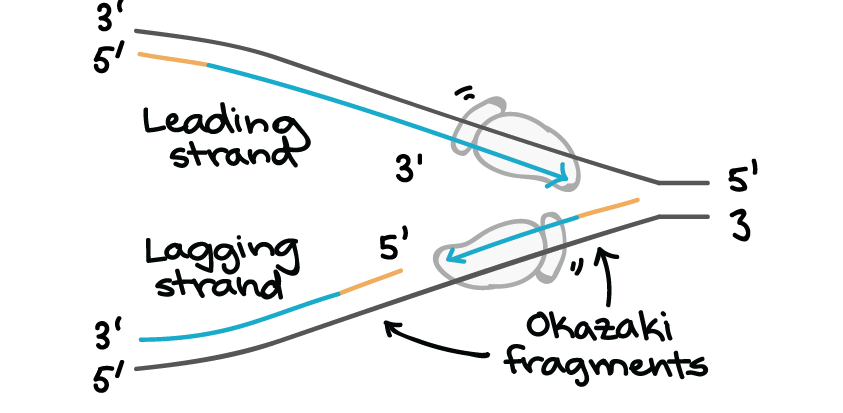
Why DNA replication takes place in 5' to 3' direction not 3' to 5'?
An oft-cited piece of evidence for the common origin of life is the observation that all living organisms use similar enzymes that synthesize nucleotide polymers in the same, direction to produce copies of their genetic information. The question is why such a polymerase is not currently found anywhere in nature.

DNA replicates in 5’to 3’ direction… not 3' to 5'... Why??
In all living organisms, the enzyme which has the function of synthesizing nucleic acid polymers performs this function by adding the nucleotide 5’ triphosphate to 3’hydroxial group of the growing chain. The following process of addition is known as the directionality of DNA and RNA polymerases.
The lack of any alternative mechanism, e.g. addition in a direction, may indicate a very early founder effect in the evolution of life, or it may be the result of selective pressure against such an alternative.
Briefly, dNTP is the source of energy for the phosphodiester bond formation and it must be added. dNTP is the type of nucleotide that contains two additional phosphate groups attached to its 5’end. For joining the 3’OH group with the phosphate group lying next to nucleotide one oxygen must be removed from this phosphate group. This oxygen is further attached to 2 more phosphate groups and which are attached to Mg++. Mg++ has the ability to pull up the electrons of the oxygen molecule and this weakens the bond and the nucleophilic attack of oxygen from the 3’OH succeeds and forms phosphodiester bond.
When we try to join dNTP’s 3’OH group to 5’phosphate group of the next nucleotide, then there won’t be enough energy to weaken the bond between the oxygen attached to 5’phosphorous (the other two phosphate groups of dNTP’s are present at the 5’end, not on the 3’end) which helps in making the nucleophilic attack harder.
Another simple explanation, is known that RNA polymerase has dual activity, but you see, RNA polymerase doesn't have proofreading activity!. Proofreading requires removal of the mismatched base, but in the 3'->5 direction the base's attachment had consumed the triphosphate at the 5' tip of the strand, so it is no longer available to add the replacement base. 3'->5' activity readily destroys the proofreading capability of a polymerase So, basically, it is the need for proofreading that restricts the synthesis of DNA strands to 5'->3'. Why it is so, would need a lot more explanation (if in words) but I think a picture has far better explanatory power than a thousand words. I've added a picture from Essential Cell Biology that shows the answer to the 'WHY' question:
The other important consideration is to repair. If one or more nucleotide is missing in one strand, repair of the missing nucleotide would be impossible for 3' to 5' synthesis, because no 5'-triphosphate is present. On the other hand, 5' to 3' synthesis does not require a 3'-triphosphate present at the repair site. This is important. That is 3' to 5' synthesis does not allow nucleotide repair.
DNA polymerase can't start working without 3'OH extremity and template to copy. DNA replication goes in the 5' to 3' direction because DNA polymerase acts on the 3'-OH of the existing strand for adding free nucleotides.
The video (~ 09 min) explains the reason in details.
More Reading Source/Reference
- https://biology.stackexchange.com/questions/477/why-is-dna-replication-performed-in-the-5-to-3-direction
- https://journals.plos.org/plosone/article?id=10.1371/journal.pone.0018881
- https://www.quora.com/Why-is-DNA-replicated-in-the-5-3-direction
